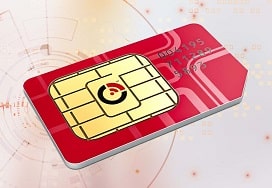What Is An Iot Sim Card IoT SIM Cards Introductory Guide
Iot Sim Card copyright IoT SIM Cards Explained Understanding Differences

In the rapidly evolving landscape of the Internet of Things (IoT), the demand for efficient, resilient, and low-energy connectivity options is extra crucial than ever. As devices proliferate and the necessity for fixed data transmission grows, low-power IoT connectivity protocols have emerged as important enablers for the ecosystem. Understanding these protocols is important for developers, engineers, and companies aiming to leverage IoT technologies successfully.
Low-power connectivity is primarily aimed at options that require minimal energy consumption whereas facilitating communication across quite a few units. The hallmark of those protocols lies of their ability to maintain long battery life, usually extending to a quantity of years for devices working on small batteries. The stability between energy effectivity and reliable connectivity is a core tenet of IoT deployments.
Does Nb-Iot Need A Sim Card IoT SIM Plans and Pricing
One of the most acknowledged low-power connectivity choices is LoRaWAN. It stands for Long Range Wide Area Network and is designed for long-range transmissions with low power necessities. LoRa allows devices to speak over distances that surpass traditional wi-fi solutions, making it appropriate for purposes such as agriculture and smart metropolis infrastructure.
LoRaWAN operates in unlicensed frequency bands, allowing for important cost financial savings, though this additionally means increased potential for interference. The structure employs a star network topology, connecting varied sensors to gateways, which then communicate with a central server. This strategy permits devices to remain in a low-power sleep mode until they want to transmit knowledge, conserving energy.
Another prominent protocol is Sigfox, which additionally operates in a low-energy, wide-area context. It is specifically tailor-made for small messages, optimizing the transmission of lightweight knowledge packets. This makes it ideal for functions like asset tracking and environmental monitoring, the place solely temporary updates are essential.

Unlike LoRaWAN, Sigfox makes use of an easier protocol designed primarily for uplink messages, transmitting info from devices to the cloud. Its unique method to knowledge transmission ends in an easy and efficient ecosystem that prioritizes battery longevity and network scalability, even because the number of related gadgets grows.
4g Iot Sim Card Why not use consumer SIMs IoT projects
Zigbee has carved its area of interest in low-power, short-range connectivity, particularly for residence automation and industrial applications. It employs a mesh community topology, allowing gadgets to relay messages to one one other, effectively extending the vary of communication without having excessive energy expenditure. Each device within the Zigbee network acts as a repeater, enabling more sturdy connectivity in environments suffering from obstacles that may otherwise disrupt communication.
Zigbee helps a number of channels throughout the 2.4 GHz band, providing versatility and adaptability for gadget intercommunication. Its low power consumption mannequin makes it appropriate for battery-operated devices that demand lengthy operational life, although the limits of vary could hinder some applications.
Telkomsel Iot Sim Card SIM Card IoT Projects Global Deployments
Bluetooth Low Energy (BLE) serves the precise function of providing a low-power various to classical Bluetooth. Commonly present in wearables and health-monitoring units, BLE enhances energy effectivity by allowing units to stay in a low-power sleep state while still sustaining the flexibility to transmit knowledge.
This protocol exemplifies the adaptability required for IoT deployments, offering a balance between data transmission pace and energy needs. BLE has gained traction in numerous client electronics, establishing standards for fitness trackers and smart residence devices where energy consumption is a important factor.
Narrowband IoT (NB-IoT) represents another low-power various that integrates seamlessly into current cellular networks. Utilizing only a slender band of frequency, NB-IoT successfully enhances connectivity for gadgets in hard-to-reach locations. This solution emphasizes the significance of cost-effective scalability for city environments, where numerous units should reliably operate directly.
The protocol's capacity to penetrate deep indoors means it's completely suited for purposes that involve constructing utilities or enhanced metropolis infrastructures - Vodafone Iot Sim Card. The evolution of NB-IoT represents convergence between traditional cellular networks and trendy IoT requirements, enabling service providers to offer low-cost options with intensive protection.
Iot Sim copyright IoT SIM Cards Explained Connectivity
Weighting the choices of all these low-power connectivity protocols results in inspecting them by way of varied lenses, together with software context, energy calls for, and knowledge requirements. Understanding these protocols' nuances allows for informed decision-making in deciding on essentially the most suited possibility for particular use instances.
For developers advocating rapid deployment and intensive scalability, selecting amongst these solutions can have lasting implications. As networks grow and gadget counts reduce the restrictions of traditional infrastructures, these protocols have unlocked pathways to innovative options throughout a variety of sectors. Each protocol serves specific niches, catering to various calls for around energy efficiency, distance, and information integrity.

Future advancements in low-power IoT connectivity protocols promise much more subtle options. The integration of machine learning and synthetic intelligence into these networks can lead to self-optimizing architectures, thus additional refining energy use while boosting performance metrics. Steering toward a extra sustainable IoT panorama will hinge upon enhancing these protocols to handle the increasing information calls for competitive with traditional, more energy-hungry networks.
In conclusion, the panorama of low-power IoT connectivity protocols is a tapestry of numerous options tailor-made to satisfy specific use circumstances. LoRaWAN, Sigfox, Zigbee, BLE, and NB-IoT every provide unique advantages that can enhance the performance and efficiency of connected gadgets. As the world continues to embrace the Internet of Things, understanding and leveraging these protocols will play a pivotal position in driving innovation and sustainability across varied industries.
Prepaid Iot Sim Card IoT SIM Cards
- Low-power IoT connectivity protocols are designed to optimize energy consumption, permitting gadgets to operate for extended intervals on restricted battery power.
- LoRaWAN (Long Range Wide Area Network) facilitates long-range transmissions with minimal energy usage, making it ideal for rural and expansive areas.
- NB-IoT (Narrowband IoT) makes use of present cellular networks and offers improved indoor protection, low latency, and better battery life compared to conventional cellular protocols.
- Zigbee operates in a mesh network topology, enabling devices to speak not directly, enhancing range and reliability whereas conserving energy.
- Thread is an IP-based protocol that gives secure and scalable communication for low-power gadgets, making it suitable for residence automation purposes.
- Sigfox specializes in ultra-narrowband radio expertise, focusing on the transmission of small information packets over long distances with excessive energy efficiency.
- Bluetooth Low Energy (BLE) is often used for short-range communication, significantly lowering energy consumption while sustaining a great connection vary.
- Weightless is a set of standards centered on low-power, wide-area networking, offering completely different variants tailored to particular application wants.
- Anticipating the rise of smart cities, low-power IoT protocols facilitate infrastructure communication, enhancing the efficiency of assets and services.
- Security remains a precedence across all low-power IoT protocols, incorporating encryption and authentication measures to guard device communications from potential threats.undefinedWhat are low-power IoT connectivity protocols?
Low-power IoT connectivity protocols are communication standards designed for devices that have to function with minimal energy consumption. These protocols allow environment friendly information transmission over short to long distances whereas preserving battery life, making them perfect for applications similar to smart houses, wearable technology, and environmental monitoring.
Why are low-power protocols necessary link for IoT devices?
Low-power protocols are essential for IoT gadgets as they permit for extended operation on restricted energy sources, such as batteries or energy harvesting techniques. This is significant in applications the place frequent charging or battery substitute is impractical, making certain that devices remain useful over lengthy durations.
Nb Iot Sim Card IoT SIM Card
What are some examples of low-power IoT connectivity protocols?
Common low-power IoT connectivity protocols embrace LoRaWAN, Sigfox, Zigbee, and NB-IoT. Each of those protocols has distinctive options tailored for various use circumstances, similar to long-range connectivity, low data rates, and mesh networking capabilities, making them suitable for varied IoT purposes.
How do low-power protocols differ from conventional connectivity protocols?
Low-power protocols are particularly designed to reduce energy consumption and optimize battery life, whereas traditional protocols like Wi-Fi and Bluetooth might prioritize higher data throughput. Low-power protocols usually help longer-range communication and decrease information charges, making them match for IoT functions site that require longevity over velocity.
Hologram Global Iot Sim Card IoT SIM card IoT M2M eSIMs
What factors ought to be considered when selecting a low-power IoT connectivity protocol?
When selecting a low-power IoT connectivity protocol, consider elements corresponding to range, data rate, energy consumption, network topology, and the particular requirements of the application. Additionally, assess the provision of network infrastructure, scalability, and compatibility with current techniques to ensure a seamless deployment.
Can low-power protocols support real-time data transmission?
Best Iot Sim Card Buy IoT SIM Cards
While low-power protocols are typically optimized for energy efficiency, some, like NB-IoT, can help real-time information transmission to a sure extent. However, they will not be appropriate for functions requiring high-speed information transfer. Choose a protocol primarily based on the urgency of knowledge transmission needs versus energy conservation.
Are low-power IoT connectivity protocols secure?
Iot Sim Card copyright Smart IoT SIM Cards
Security in low-power IoT protocols varies by protocol. Many fashionable low-power protocols combine encryption and authentication features to safeguard data towards unauthorized access. It's important to evaluation a protocol's security measures and consider further layers of safety based mostly on the specific use case.
What industries profit most from low-power IoT connectivity protocols?
(Iot Sim Card Pricing)
Global Nb-Iot Sim Card The Ultimate Guide IoT SIM Cards
Industries such as agriculture, smart cities, healthcare, and logistics significantly profit from low-power IoT connectivity protocols. These sectors often require units to monitor, gather, and transmit data over extended intervals without frequent maintenance, making low-power options advantageous.
Is the deployment of low-power IoT connectivity protocols complex?
The complexity of deploying low-power IoT connectivity protocols is dependent upon the specific protocol and the prevailing infrastructure. Generally, they are designed for ease of use, but factors such as network configuration, system compatibility, and required scalability ought to be fastidiously deliberate to ensure a smooth implementation.